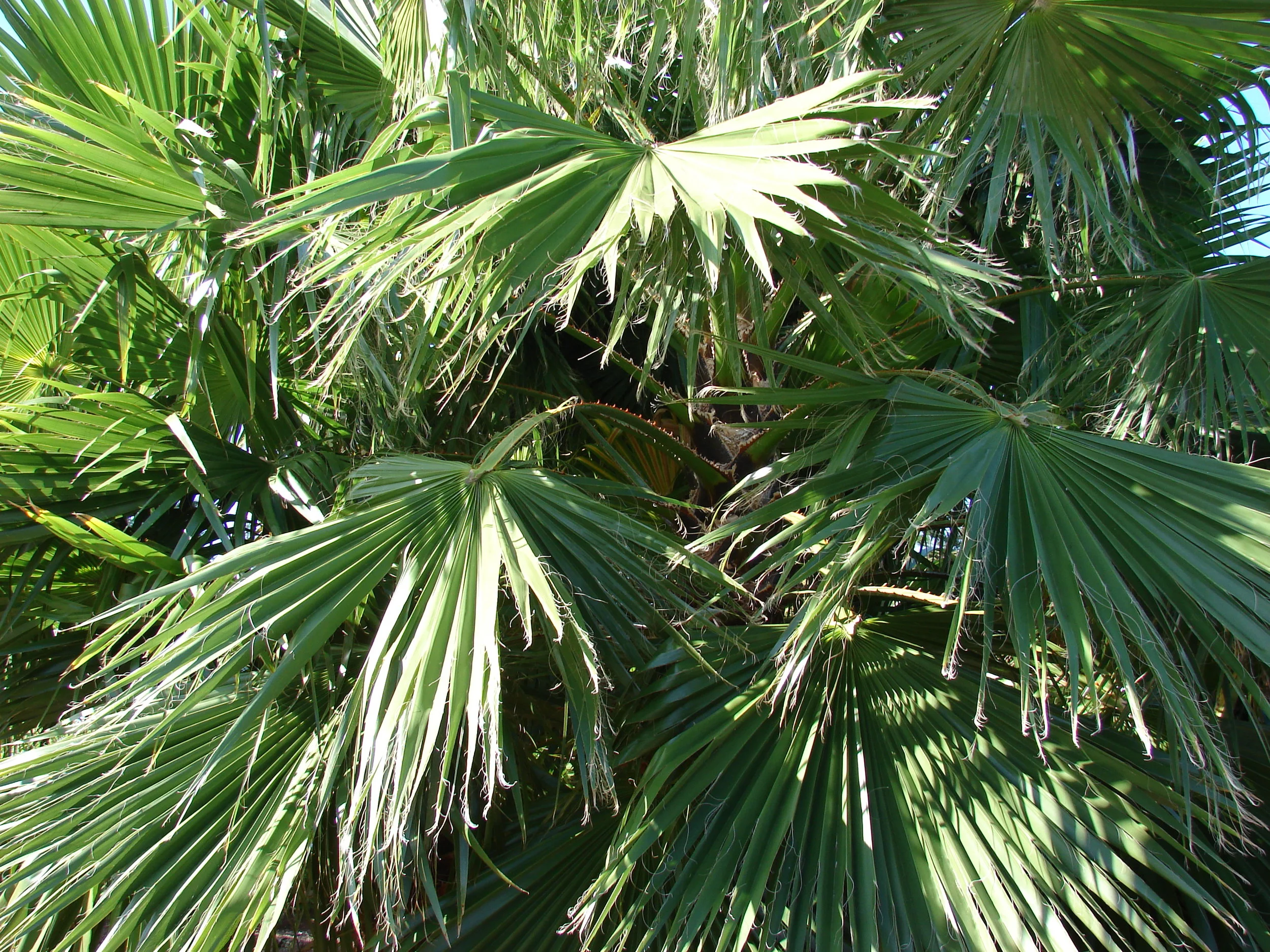Photo by Stan Shebs licensed under CC BY-SA 3.0
Scattered throughout hidden oases nestled in the southwest corner of North America grows a glorious species of palm known to science as Washingtonia filifera. This charismatic tree goes by a handful of common names such as the desert fan palm, petticoat palm, and California fan palm. No matter what you call it, there is no denying that this palm is both unique and important to this arid region.
Populations of the desert fan palm are few and far between, occurring in a few scattered locations throughout the Colorado and Mojave Deserts. This palm can’t grow just anywhere in these deserts either. Instead, its need for water restricts it to small oases where springs, streams, or a perched water table can keep them alive.
Fossil evidence from Wyoming suggests that the restricted distribution of this palm is a relatively recent occurrence. Though not without plenty of debate, our current understanding of the desert fan palm is that it could once be found growing throughout a significant portion of western North America but progressive drying has seen its numbers dwindle to the small pockets of trees we know today.
The good news is that, despite being on conservation lists for its rarity, the desert fan palm appears to be expanding its range ever so slightly. One major component of this range expansion has to do with human activity. The desert fan palm makes a gorgeous specimen plant for anyone looking to add a tropical feel to their landscape. As such, it has been used in plantings far outside of its current range. Some reports suggest that it is even becoming naturalized in places like Death Valley, Sonoran Mexico, and even as far away as Florida and Hawai’i.
Photo by Forest & Kim Starr licensed under CC BY 3.0
Other aspects contributing to its recent range expansion are also attributable to human activity, though indirectly. For one, with human settlement comes agriculture, and with agriculture comes wells and other forms of irrigation. It is likely that the seeds of the desert fan palm can now find suitably wet areas for germination where they simply couldn’t before. Also, humans have done a great job at providing habitat for potential seed dispersers, especially in the form of coyotes and fruit-eating birds.
It’s not just an increase in seed dispersers that may be helping the desert fan palm. Pollinators may be playing a role in its expansion as well, though in a way that may seem a bit counterintuitive. With humans comes a whole slew of new plants in the area. This greatly adds to the floral resources available for insect pollinators like bees.
Photo by docentjoyce licensed under CC BY 2.0
Historically it has been noted that bees, especially carpenter bees, tend to be rather aggressive with palm inflorescences as they gather pollen, which may actually reduce pollination success. It is possible that with so many new pollen sources on the landscape, carpenter bees are visiting palm flowers less often, which actually increases the amount of pollen available for fertilizing palm ovules. This means that the palms could be setting more seed than ever before. Far more work will be needed before this mechanism can be confirmed.
Aside from its unique distribution, the desert fan palm has an amazing ecology. Capable of reaching heights of 80 ft. (25 m) or more and decked out in a skirt of dead fronds, the desert fan palm is a colossus in the context of such arid landscapes. It goes without saying that such massive trees living in desert environments are going to attract their fair share of attention. The thick skirt of dead leaves that cloaks their trunks serve as vital refuges for everything from bats and birds, to reptiles and countless of insects. Fibers from its leaves are often used to build nests and line dens.
And don’t forget the fruit! Desert fan palms can produce copious amount of hard fruits in good years. These fruits go on to feed many animals. Coupled with the fact that the desert fan palm always grows near a water source and you can begin to see why these palms are a cornerstone of desert oases. There has been some concern over the introduction of an invasive red palm weevil (Rhynchophorus ferrugineus), however, researchers were able to demonstrate that the desert fan palm has a trick up its sleeve (leaf skirt?) for dealing with these pests.
It turns out that desert fan palms are able to kill off any of these weevils as they try to burrow into its trunk. The desert fan palm secretes a gummy resin into damaged areas, which effectively dissuaded most adults and killed off developing beetle larvae. For now it seems that resistance is enough to protect this palm from this weevil scourge.
It is safe to say that regardless of its limited distribution, the desert fan palm is one tough plant. Its towering trunks and large, fan-like leaves stand as a testament to the wonderful ways in which natural selection shapes organisms. It is a survivor and one that has benefited a bit from our obsession with cultivating palms.
Photo Credits: [2] [3] [4] [5]
Further Reading: [1] [2] [3] [4] [5]





![Howea belmoreana and Howea forsteriana [SOURCE]](https://images.squarespace-cdn.com/content/v1/544591e6e4b0135285aeb5b6/1493668069898-57NESX2V52YKJ81V4I12/nature04566-f1.2.jpg)


